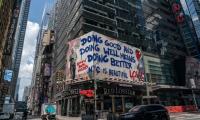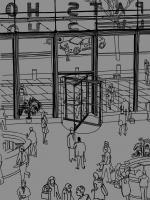New York City
Articles tagged with New York City
Tag Archive
- 2022
- Acarte
- activists
- África Ocidental
- African cinema
- Alemanha
- angola
- angolan cinema
- antifa
- apartheid
- arab spring
- Architecture Biennial
- archive de documentation
- art
- arte
- Artur Nunes
- association tchiweka de documentation
- biografia
- biography
- Black womanhood
- cannibal museology
- carnivalesque protests
- Circulations
- Coimbra Biennial of Contemporary Art
- Collective of Victims
- colonial unconscious
- contemporary dance
- crioulo
- Cristiano Ronaldo
- cultural memory
- cultural movement
- ddd
- decolonial
- decolonizing museums
- descobrimentos
- dia da consciência negra
- diálogo
- economia
- édouard glissant
- Ella Baker
- Europe
- Felix Shumba
- Festa do Avante
- Festival de Músicas do Mundo
- Flora
- galeries
- geographies
- germany
- hair
- hangar
- Hélio Oiticica
- inclusão
- Ingrid Mwangi
- intellectuals
- interculturalit
- Iva Pinhel Évora
- Jornalism
- journey
- labels
- LGBTQI
- língua portuguesa
- luso-tropicologia
- Migration and Development
- mil e uma noites
- Mimesis
- Monuments
- myth
- nástio mosquito
- Nicholas Mirzoeff
- pandemic
- patrice Lumumba
- plateau
- politics of memory
- post-memories
- postcoloniality
- próximo futuro
- Rabbit Hole
- Rachel Malaika
- rap
- representações de áfrica
- Resgate
- São Tomé and Príncipe
- Sao Tomé e Príncipe
- sequence
- small axe
- social inclusion
- society
- sudoeste
- Super Camões Richard Zenith
- surrealism
- Swahili
- tanzania
- terrorisme
- theatre
- todos festival
- toponímia
- Tuchangamke
- Viriato da Cruz
- vodou
- writer
 For 20 years, Fran Lebowitz has been dreaming of tourists disappearing from Times Square. “Now there are no tourists in Times Square,” she recently said, “but, of course, there’s no one in Times Square.” When the pandemic hit in March, Times Square went from a congested, and hellish, hub for tourists to an eerily empty dystopia. More recently, though, it has become a site of artistic expression, taken over by a free fall of protest art, colorful parades and performances. “It lacks the same history of worker organization spaces like Union Square, but with the spread of digital graphics and art during the Covid-19 pandemic and black-led uprisings, Times Square has made itself a unique site for protest in a city with more empty space, and an ongoing stream of creative mobilizations,” said Sarah J Seidman, a curator at the Museum of the City of New York.
For 20 years, Fran Lebowitz has been dreaming of tourists disappearing from Times Square. “Now there are no tourists in Times Square,” she recently said, “but, of course, there’s no one in Times Square.” When the pandemic hit in March, Times Square went from a congested, and hellish, hub for tourists to an eerily empty dystopia. More recently, though, it has become a site of artistic expression, taken over by a free fall of protest art, colorful parades and performances. “It lacks the same history of worker organization spaces like Union Square, but with the spread of digital graphics and art during the Covid-19 pandemic and black-led uprisings, Times Square has made itself a unique site for protest in a city with more empty space, and an ongoing stream of creative mobilizations,” said Sarah J Seidman, a curator at the Museum of the City of New York.  Compiled from episodes of their show, which has gained millions of listeners over the past 10 years, the book introduces us to mysteries that most of us have never considered. Why are manhole covers round? Why do the Japanese infuse them with elaborate decorations? What do painted yellow symbols on streets tell us? Why are traffic lights red on top and green on bottom? What might we notice about the designs and support systems of buildings and bridges? Why have so-called love locks or love padlocks become a problem around the world? Why are some streets straight and others curvilinear?
Compiled from episodes of their show, which has gained millions of listeners over the past 10 years, the book introduces us to mysteries that most of us have never considered. Why are manhole covers round? Why do the Japanese infuse them with elaborate decorations? What do painted yellow symbols on streets tell us? Why are traffic lights red on top and green on bottom? What might we notice about the designs and support systems of buildings and bridges? Why have so-called love locks or love padlocks become a problem around the world? Why are some streets straight and others curvilinear? 
